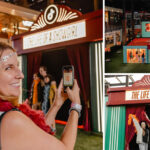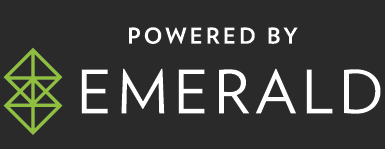By Nataly Kelly, CMO of Zappi
Some celebrities have an impact so grand it’s almost as measurable as GDP — cultural capital that brands will jostle, sprint, and contort themselves to be part of.
Case in point: Taylor Swift’s announcement this week of her “orange era” and new album Life of a Showgirl. Within hours, the brands were there. Reese’s and Oreo dropped a much-anticipated collab, playing into the grandeur of their reveal. Panera unveiled a new sourdough, cheekily titled “It’s a Loaf Story,” inspired by Swift.
Swift announced the album on a Wednesday. In less than 48 hours, brands have spun creative, rallied their agencies, and launched products – all in an effort to be among the first to latch onto the next cultural moment.
It says something profound about marketing today: cultural capital has become the new currency of brand success. But what are the trade-offs?
The Allure… and the risk
When social feed is the marketplace, moments move consumers. Swift’s announcement didn’t just light up X and TikTok — it created micro-economies of attention. And it will continue to have ripple effects as we learn more.
But there’s a catch. Zappi’s analysis of over 2,300 ads shows that while A-list celebrities give creative a small lift in distinctiveness, they don’t necessarily improve effectiveness. Ads with celebrities score the same for short-term sales impact as those without. In other words, one in four ads features a famous face, but those spots aren’t moving the needle more than non-celebrity creative.
Why? Because when you tie your brand to someone else’s moment, you run the risk of putting your own identity on the chopping block. Brands can dilute their value in the pursuit — ending up remembered more for the chase than for what they stand for.
The celebrity engagement spectrum
Not all celebrity involvement is equal. Think of it as a spectrum from highly involved to one-off moments:
- Ownership: Celebrity-founded or co-owned brands – Jessica Alba’s Honest Company, Ryan Reynolds’ Mint Mobile – where the famous figure is financially invested and personally committed to the brand’s future.
- Co-Creation: Strategic collaborations – Sabrina Carpenter’s new Dunkin’ drink, McDonald’s celebrity meal combinations with Travis Scott and Angel Reese – where both parties benefit and the celebrity’s association is built into the product DNA.
- Paid Partnerships: Traditional endorsement ads – big-game ads like Lionel Messi with Michelob Ultra or Meg Ryan and Billy Crystal’’s with Hellmann’s – where the link is transactional and time-bound.
- Reactive Alignments: Jumping into a celebrity moment without their direct involvement — as with brands now riffing on Swift’s orange era.
The further right you go on this spectrum, the more aware you need to be of the trade-offs between the short-term benefits and the longer-term risk of diluting your brand.
Manufacturing cultural moments
The lesson isn’t to avoid cultural moments. It’s to use them to amplify for your own distinctiveness, not substitute for it. The long-term winners will be those who deeply understand their consumers, identify the cultural moments that speak to them and move quickly in a way only their brand can.
That starts with connecting the dots. Most brands have fragments of insight scattered across ad and product testing data, social listening feeds, and engagement analytics. When you bring these together, you can spot emerging trends early and root your creative in what your audience actually cares about.
It also means investing in your own identity. Brands today aren’t just competing against category rivals, they’re competing against everything else on consumers’ screens. Duolingo, for example, manufactures many cultural moments with a highly distinctive, irreverent tone across its channels. So when the brand hops on a cultural trend, they do so in an unmistakably “Duolingo” way.
Most importantly, you need internal processes that are agile enough to catch a cultural wave at its formation, not its peak. It’s hard to innovate with your head down on the next long-term priority. Teams should be empowered by their data and validated in having the voice of consumers handy to move quickly to capitalize on cultural moments.
Culture Is a Dialogue
You don’t have to attach your brand to every celebrity trend to remain relevant. The national park Service does this well on their X feed, tying its unique voice to cultural moments. One of my favorites was a tip on spotting the Northern Hawk Owl: “Its facial expression ranges from resting owl face to slightly less resting owl face.” They’re showing that you can engage in cultural dialogue while staying true to your brand.
The “orange era” is a perfect illustration of how quickly consumers decide what wins in culture. The best brands aren’t just reacting to those decisions — they’re part of shaping them. But they do it in a way that reinforces who they are, so they don’t wake up one day with a viral post but no brand equity left.
About the Author
Nataly Kelly is the Chief Marketing Officer at Zappi. Her latest book, Brand Global, Adapt Local, comes out in June 2025. A former Fulbright scholar in sociolinguistics, her prior books include Take Your Company Global and Found in Translation.





